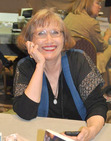Meg Benjamin's Blog, page 14
March 13, 2013
Who Is That Guy?
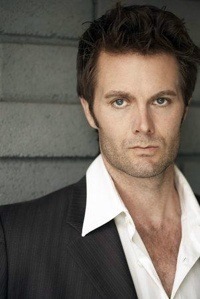 So I’m watching Vegas, and all of a sudden there’s this guy in glasses—a character called Jonesy. Only the thing is, I know him. From somewhere, some show, some other show, that is. I’m now no longer paying attention—much—to the story. I’m trying to remember where exactly I saw that actor before. Why he looks so familiar. And then, when the episode is almost over, it comes to me. He was this wormy little creep named Dewey on Justified. Tattoos, weird hair, very pronounced Kentucky accent. Only now he’s wearing hornrims and a snapbrim hat. And to make things even more interesting, according to the IMDB, he’s actually Australian. He’s an actor named Damon Herriman.
So I’m watching Vegas, and all of a sudden there’s this guy in glasses—a character called Jonesy. Only the thing is, I know him. From somewhere, some show, some other show, that is. I’m now no longer paying attention—much—to the story. I’m trying to remember where exactly I saw that actor before. Why he looks so familiar. And then, when the episode is almost over, it comes to me. He was this wormy little creep named Dewey on Justified. Tattoos, weird hair, very pronounced Kentucky accent. Only now he’s wearing hornrims and a snapbrim hat. And to make things even more interesting, according to the IMDB, he’s actually Australian. He’s an actor named Damon Herriman.
I love movies and TV shows, and I tend to remember actors and actresses who make an impression on me. Only I don’t always remember where it is I saw them before. And it usually bugs me until I figure it out—bugs me enough, sometimes, that I spend most of the program trying to figure out who it is and why I know him/her. Which means I don’t always pay as much attention to what’s actually happening on the show.
Take Garrett Dillahunt, for example. I first encountered him in the late-lamented series Life. He played a nasty Russian mobster—he was icy and blond and thoroughly unnerving. His death at the hands of the hero (Damian Lewis, the sort of villain on Homeland) was the climax of the series. I kept running into him on other series like Burn Notice, usually playing villains. It always took me a minute to recognize him because he was no longer blond and no longer had a Russian accent. He got me again, however, when Raising Hope started. It took me forever to recognize the lovably dim father as Garrett Dillahunt, and after that I kept expecting him to have a psychotic episode and blow everybody away.
If you’re a fan of one of the big, character-driven series like The Wire, this can become almost obsessive because those actors keep showing up again and again in other series. “Wait a minute, wait a minute, it’s…Bunk! Isn’t it? Isn’t that him? And isn’t that the guy who played one of the kids in the projects, you know, the one with the hoodie?”
Fortunately for me, my husband is a tolerant soul and doesn’t tell me to please shut up and go away. The latest episode of this particular craziness was when we watched a rerun of an episode of Leverage. The actress who placed Nate’s ex-wife, Kari Matchett, was hauntingly familiar. I could almost remember her doing…something. It drove me crazy until I was fixing dinner the next day and then, suddenly, I remembered she was the head of Annie’s department in Covert Affairs.
This is, of course, fairly nutsy behavior. The only thing that keeps it from edging over into full-blown psychosis is the blessed Internet Movie Database (IMDB). If all else fails, I can flip open my laptop, head over to IMDB while the show is on and generally find a link to whatever previous performance it is that I’m remembering when I see an actor in a current role (“Anne Ramsay on Dexter? Oh yeah. She was Jamie’s best friend on Mad About You!”).
Otherwise, I’d probably be lying there at two a.m., wide awake, still moaning, “I know that actor, I’ve seen him before, who is that guy?”


March 6, 2013
Being the Crazy Lady
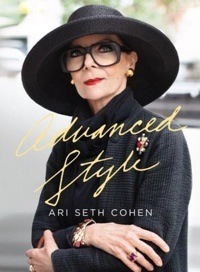 I stumbled across Advanced Style by Ari Seth Cohen sort of by accident at my local library—it was an attractive coffee table book, and I wanted something to leaf through. Once I opened the book, though, I was hooked. It’s based on Cohen’s Advanced Style Web site, which he devotes to pictures of stylish women and men of a certain age, that age frequently being somewhere in their eighties. Some of these individuals dress a lot like they probably dressed when they were younger—Chanel suits, stylish hats, fashionable shoes that don’t look like they’d kill you if you wore them for an hour. But some of them are obviously individuals—lots of colors and textures, wild combinations of jewelry, and in at least one case false eyelashes so long you wonder how she can see.
I stumbled across Advanced Style by Ari Seth Cohen sort of by accident at my local library—it was an attractive coffee table book, and I wanted something to leaf through. Once I opened the book, though, I was hooked. It’s based on Cohen’s Advanced Style Web site, which he devotes to pictures of stylish women and men of a certain age, that age frequently being somewhere in their eighties. Some of these individuals dress a lot like they probably dressed when they were younger—Chanel suits, stylish hats, fashionable shoes that don’t look like they’d kill you if you wore them for an hour. But some of them are obviously individuals—lots of colors and textures, wild combinations of jewelry, and in at least one case false eyelashes so long you wonder how she can see.
They were wonderful, and I was enchanted.
Part of my enchantment came from having just started Amanda MacKenzie Stuart’s biography of Diana Vreeland. In case you’re not familiar with her, Vreeland was a legendary editor of Vogue in the sixties and seventies. Unlike the present editor, Anna Wintour, Vreeland was never considered a beauty. Her own mother told he she was ugly and others agreed, although many pointed out that her ugliness seemed to disappear once she began to speak. By all accounts, Vreeland gave up early on trying to achieve the conventional idea of beauty. Instead, she went for interesting, which the popular press sometimes equates with crazy. In her sixties and seventies, she wore her black hair in a blunt bob that set off her very white skin (which she sometimes made whiter with powder). Instead of blush, she wore two slashes of rouge across her cheeks, extending to and covering her ears. She wore brilliantly colored clothes that sometimes looked like costumes. And she put Vaseline on her eyelids. Bizarre it might have been, but she carried it off. And nobody could deny that she was one memorable woman.
I think the women in Cohen’s book are similar in a lot of ways. They’ve reached the age where conventional beauty is pretty much beyond them. In a way, we expect them to be invisible—like those elderly women in the grocery store who seem to disappear in the cereal aisle. But these women have chosen a different route, defying expectations and doing their own thing.
And maybe there’s a lesson there. Being beautiful is pretty much a crap shoot, after all, a matter of genetics, iron discipline, and maybe a more-than-passing acquaintance with Photoshop. Those of us who don’t make the cut can either try to come as close as possible or do what Cohen’s ladies have done—say screw it, and go for crazy instead. Wear that wild-looking scarlet kimono jacket. Buy that turquoise scarf with the bangles. Get those crystal earrings that dangle to your shoulders.
What’s the worst that can happen, after all? People may look at you funny, but at least they’re looking. You won’t disappear.
I’m sort of taking the whole crazy lady thing to heart, although crazy in romance land sometimes translates to routine. So check me out at the RT Booklovers Convention. I’ll be the one in the bright yellow ruana with the round Harry Potter glasses. Who knows, I may even Vaseline my eyelids. Couldn’t hurt, right?


February 27, 2013
Those Obscure Objects of Desire
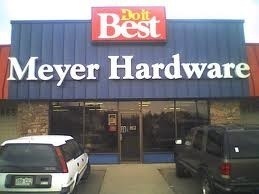 My hubs has a thing for hardware stores. I used to refer to it as the “Oooooh needle-nose pliers” reaction. He can happily wander the aisles of both neighborhood hardware places and big chain stores for hours on end, ogling LED light bulbs and snow blowers and charcoal grills. I, on the other hand, could easily accomplish most of my hardware store shopping within the first five minutes after I enter the place.
My hubs has a thing for hardware stores. I used to refer to it as the “Oooooh needle-nose pliers” reaction. He can happily wander the aisles of both neighborhood hardware places and big chain stores for hours on end, ogling LED light bulbs and snow blowers and charcoal grills. I, on the other hand, could easily accomplish most of my hardware store shopping within the first five minutes after I enter the place.
For me, it’s restaurant supply stores. We used to live not far from an Ace Mart in San Antonio and I found I could never just pop in and out. I had to stroll down each aisle, studying the really cool restaurant tools and fixtures that seemed amazingly cheap compared with what you paid at the upscale gourmet stores.
The problem always came when I started thinking I needed to buy some of these things. Storage containers, for example. I love the square plastic ones with the measurements on the side, the kind that I always picture marinating a pot roast in. And the Asian bamboo steamers and wire spider strainers. And the Mexican cast iron fajita pans with wooden coasters. And the shakers and syrup dispensers and creamers and miniature teapots. I always want them, and I always have to make myself stop and think carefully. Do I really need these things? Will I really use them? Yes that’s a really cute shaker, but am I actually going to put together that wonderful all-purpose BBQ rub or am I just kidding myself?
We all have stores like these, I think. For some people it’s shoes. For others, it’s books. An unfortunate few lose control at chocolatiers. If you’re shopping by yourself, these “trigger stores” can result in disaster. You arrive at your house with five pairs of shoes and an empty bank account. What you need in this case is a judgmental friend or relative, someone who’ll say “You already have three pairs of silver sandals. And those aren’t even pretty ones.” In extreme cases, you need someone who’ll just grab your arm and pull you away from those glass candy cases, muttering “Come on, we’re late.”
This is what the hubs and I provide for one another. I’m the one tapping my toe in impatience in the electrical aisle of the hardware store, reminding him we already have a bountiful supply of LED bulbs and we really don’t need another extension cord. He’s the one peering over my shoulder at the restaurant supply store, shaking his head at the bento box (“What would you do with it anyway?”). Between the two of us, we’ve probably saved thousands.
But I still want a square plastic food container.


February 20, 2013
Haunted Places
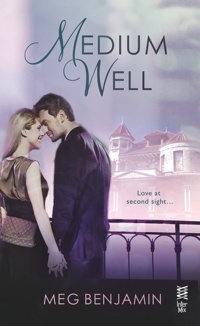 My new ghost story trilogy (the first, Medium Well is now available from Berkley InterMix at Amazon and Barnes and Noble) takes place in a very spooky place: the King William District of San Antonio. San Antonio itself is full of places that are supposed to be haunted—I mean, the Alamo is in the center of downtown SA. The Menger Hotel is right across the street from the Alamo and boasts several well-known ghosts, including Teddy Roosevelt (who recruited the Rough Riders there during the Spanish American War). The Spanish Governors Palace has a haunted fountain. The Majestic Theatre has some performance-loving ghosts. And that’s just downtown.
My new ghost story trilogy (the first, Medium Well is now available from Berkley InterMix at Amazon and Barnes and Noble) takes place in a very spooky place: the King William District of San Antonio. San Antonio itself is full of places that are supposed to be haunted—I mean, the Alamo is in the center of downtown SA. The Menger Hotel is right across the street from the Alamo and boasts several well-known ghosts, including Teddy Roosevelt (who recruited the Rough Riders there during the Spanish American War). The Spanish Governors Palace has a haunted fountain. The Majestic Theatre has some performance-loving ghosts. And that’s just downtown.
But there are other haunted places that aren’t what you’d expect. For a couple of years, the hubs and I stayed at a motel in Nebraska on the way home from Iowa after Christmas. It was really large, with an indoor pool and a convention center, yet it usually seemed more than half empty, although that could have been the time of year. I’d head down to the lobby for a cup of coffee in the morning since I always wake up before the hubs does, and I’d frequently get the creeps. Something about it—above and beyond the fact that most of the lights had been turned out—made me feel uneasy. Then one day I was stumbling around the Internet, looking for something else, and I found that motel listed under Haunted Hotels. I was sort of shocked, but not exactly.
Some of this is expectation, of course. I’ve wandered around the Stanley Hotel in Estes Park, Colorado, which was the inspiration for Stephen King’s The Shining, and it’s predictably spooky. But the management at the Stanley really wants you to feel that way—they even do ghost tours. So it’s not surprising that you feel a bit of a creep when you go inside.
To me, what’s scarier is the place you didn’t expect to feel creepy at all. The historic building that suddenly has you looking over your shoulder. The boutique hotel where you discover you don’t really want to check out the lower story after all. The small town main street that makes you want to keep driving. Are these places haunted? Who knows? They’re certainly haunting you!
That’s what happens to my hero in Medium Well. He’s an experienced real estate salesman who’s never had a problem selling a historic home—that’s his specialty. But now all of a sudden, he’s got a place that gives him the creeps, big time. Here’s a quick taste:
Excerpt
He nodded toward a door on the far wall. “Did you check in there?”
“Not yet. Maybe it’s the kitchen.”
Danny took hold of the doorknob and turned. “Locked.”
“Why would they lock the kitchen? I don’t know if we have a key. Maybe the front door key works here, too.” She started toward him.
Danny rattled the knob again. “Probably just stuck. I don’t see a keyhole.” After a moment, he put his shoulder against the door and pushed, gritting his teeth at the thought of his recently cleaned Hugo Boss jacket. The door opened with a tooth-jarring creak.
He stood in the doorway staring at another filthy room. A utility sink stood against one wall, an ancient wood-burning stove on the other. “At least it’s got plumbing. Not all these places do.”
Biddy peeped in the door over his shoulder. “Do you think the stove is worth anything? Maybe it’s an antique.”
He glanced at the stove—black metal with a steel top, covered with a half inch of filth. It looked like it weighed a ton. “Could be valuable. Assuming you could actually get it out of here. You’d have to use a crane or something.”
He walked across the dusty floor, stepping over the occasional piece of trash, then ran his fingers across the scalloped edge at the top corner of the stove.
And suddenly his hand was on fire.
Electric sparks seemed to flow up from his fingertips to his shoulder. The surface of his palm throbbed with heat, as if the stove were flaming. “What the hell?” Danny gasped, snatching his hand away.
His shoulders ached, his back, his neck. Danny grabbed hold of his burning hand and the sparks flowed to the other side of his body. “Jesus Christ!”
“Mr. Ramos?” Beside him, Biddy frowned. “What’s wrong?”
“Christ!” He shook both hands, trying to cool them. Slowly, the heat began to recede.
“Don’t touch the stove,” he gasped. “It’s got some kind of electric charge or something.”
“The stove?” She gave him an incredulous glance, reaching her hand toward the stove top.
“Biddy, no!” Danny grabbed for her, missing her hand, so that his palm landed on the burner again.
His hand rested upon cool metal.
Biddy stared at him with real concern. “Mr. Ramos? It’s okay, really. There’s nothing here. I don’t feel anything.”
Danny took a deep breath, willing himself not to snatch his hand away again. The stove top felt cold. There were no electric sparks. “I must have touched something else. Something hot.”
“Up here?” She glanced around the room. “But it’s not hot here at all. I mean, actually it’s cold. I wish I’d brought a sweater.” She wrapped her arms around herself, rubbing her shoulders.
Danny stared around the room again. Dust. Trash. Two dirt-stained windows. He stared down at his hands, but they looked perfectly normal. No burned skin. Nothing.
His jaw clenched. Too much coffee. Too little sleep. Nothing freaky going on. “Anything else to see? Any other rooms?”
She shook her head, watching him with narrowed eyes. “Just the downstairs. The garage part.”
“Okay.” He blew out a breath. Time to head back to the real world. “Let’s go down there and check it out.”
He took the key from her fingers, feeling a quick brush of warmth as their hands touched, then shooed her out the front door, leaning back to lock it. His fingers still tingled slightly. He glanced down.
His hand was stained crimson, his fingers dripping blood.
Danny stood frozen in the doorway, staring. He didn’t feel any pain. How could he be bleeding?
“Mr. Ramos?” Biddy called to him from the bottom of the stairs. “Okay?”
He glanced down at her, then back at his hand again.
His clean, dry hand.


February 6, 2013
Bringing the Scary
Reviewers and book bloggers: Medium Well is now available for review on Net Galley!
 As someone who just wrote three ghost stories (the first, Medium Well, will be released by Berkley InterMix on February 19), I’ve spent a lot of time recently thinking about being scared—how to do it and why. I’ve always had a weakness for ghost stories, both fiction and nonfiction, but I’d never really stopped to think what it was about those stories that really got to me. Why some of them gave me nightmares and some of them didn’t do much of anything.
As someone who just wrote three ghost stories (the first, Medium Well, will be released by Berkley InterMix on February 19), I’ve spent a lot of time recently thinking about being scared—how to do it and why. I’ve always had a weakness for ghost stories, both fiction and nonfiction, but I’d never really stopped to think what it was about those stories that really got to me. Why some of them gave me nightmares and some of them didn’t do much of anything.
I should start out by saying that explicit horror doesn’t do much except make me cringe. Texas Chainsaw Massacre never really appealed to me, nor did Scream or Halloween. It wasn’t that they weren’t scary (they definitely were). But it wasn’t the kind of scary I found enjoyable. Stabbing teenagers who had the bad luck to be in the wrong place at the wrong time makes me sad rather than uneasy.
Contrast this with Silence Of the Lambs. Now you may remember SOL as being extremely violent, but in fact it isn’t. There’s one sequence that’s designed to demonstrate that Dr. Lecter really is just as dangerous as everyone said he was, but that’s it. With the exception of the ending, everything else works by innuendo. You feel that Clarice is constantly under threat, but that threat is never realized until she finally finds Buffalo Bill at the end of the movie. And it’s that constant unrealized threat that makes the movie feel so terrifying.
I think good ghost stories work with a similar dynamic. You’re always waiting for something scary to happen, but it never seems to come when you expect it. Moreover, written ghost stories can be considerably scarier than filmed ones because the action takes place in your head. There’s a moment in Shirley Jackson’s supremely terrifying Haunting of Hill House when two of the psychically sensitive guests are talking in their darkened bedroom. One of them remarks that the other’s hand, which she’s holding, is very cold tonight. Guest two replies that she isn’t holding her hand. And that’s the last sentence in the chapter, as I recall. Gotcha!
Lots of great ghost stories work just like that—did you really see something or didn’t you? What was that noise anyway? Did something just flit by that mirror? Even ghost stories that don’t take themselves entirely seriously can still give you the chills. I remember reading Jennifer Crusie’s ghost story Maybe This Time while I was using the treadmill in my basement. Yes, it was funny (hey, it’s Jennifer Crusie), but by the time I was halfway through the book, I was feeling very uneasy about being downstairs all by myself. You laugh, but it’s sort of nervous laughter.
So to some extent that’s what I tried to do in Medium Well, Medium Rare, and Happy Medium. They’re not particularly violent (although there are a few deaths here and there—they’re ghost stories, after all), but, well, things happen. The heroes and heroines see and hear things that others don’t. They’re frightened frequently and threatened occasionally. But everything works out in the end.
Hey, they may be ghost stories, but they’re still romances!
Check out my blog tour at http://www.megbenjamin.com/ for a chance to win a fifteen-dollar Amazon gift certificate!


January 30, 2013
Venus Winner
January 23, 2013
Happy Birthday Venus—With Contest!
 My first novel for Samhain Publishing, Venus in Blue Jeans, was released four years ago, January 27, 2009. It’s been quite a ride, but Venus started it all.
My first novel for Samhain Publishing, Venus in Blue Jeans, was released four years ago, January 27, 2009. It’s been quite a ride, but Venus started it all.
The whole Venus saga is kind of an illustration of the way romance publishing works. I started writing Venus because, frankly, a contest judge had pissed me off. I had another book that I was sending around the contest circuit. These days I can admit it wasn’t very good, but at that time I really thought it was. One contest judge told me flatly that my book wasn’t a romance because my hero and heroine didn’t meet within the first ten pages, and everyone knew that all romantic heroes and heroines had to meet within the first ten pages (preferably the first five). Now since I could immediately think of at least three very good romance novels where that didn’t happen, I was, shall we say, annoyed by this pronouncement.
So, I thought, what about a book where I spent the entire first chapter not having the characters meet? In fact, what about a book where that was the whole point of the first chapter? Thus was Venus born. Part of the first chapter is available at Samhain, and I’ve posted the whole thing here on my Web site.
Having had my revenge on the contest judge, I now had a collection of characters I really liked and sort of a plot. I say “sort of” because I knew in general terms where I wanted it to go, but I wasn’t sure about the specifics. And from this point on, I had a lot of help from a lot of different people. The folks in my critique group at my local RWA chapter, for example. They not only told me when I was going wrong, they also applauded me when I was going right. Contests were a huge help. A lot of judges liked that first chapter, but they also told me things I could do to make it better, and the things they told me helped me whip the rest of the book into shape, too. And I also had a wonderful editor at Samhain, Lindsey Faber, who always managed to pick out just the part of the book that wasn’t working (and the part I really hoped she wouldn’t notice!).
But that isn’t all of the saga. When I got the call (or rather the email) telling me Samhain was buying my book, I had a couple of hours of elation before my husband arrived home to tell me he hadn’t gotten a promotion at work he’d been promised for two years. It was probably the most rollercoaster day I’ve ever been through. When Venus came out on January 27, we went out to dinner that night to celebrate, and he left the next day for a new job in Colorado. I faced three months on my own, packing up the house and saying goodbye to friends and family as I prepared to move to the foothills. It was sort of hard to be as chipper as I wanted to be at the Samhain Café that day.
But now, four years later, I’m a happy Colorado resident with six more Konigsburg books to be proud of and four new non-Konigsburg books all coming out this year—Bolted from Samhain on April 2 and Medium Well (February 19), Medium Rare (August 20) and Happy Medium (December 17) from Berkley InterMix.
So to celebrate the start of it all, I’m giving away a copy of Venus In Blue Jeans, ebook or print, your choice. Just leave me a comment on this blog and you’ll be entered into a drawing next week.
Happy birthday Docia and Cal and Janie and Pete and Lars and Jess and Erik and Morgan and Tom and Deirdre and Nando and Kit and Joe and MG. And most of all, happy birthday Venus In Blue Jeans. I couldn’t have done it without you.


January 16, 2013
Cooking Thoughts: Taste This, Not That
 I love the Eat This, Not That books, although there’s a lot of overlap between them. Once you’ve identified the worst food in American, it keeps showing up from one book to another. Still, it’s always sort of stunning to discover just how much fat can be packed into something that should be innocuous, like chicken salad. The books do a valuable service in pointing out all the hidden landmines in American fast food.
I love the Eat This, Not That books, although there’s a lot of overlap between them. Once you’ve identified the worst food in American, it keeps showing up from one book to another. Still, it’s always sort of stunning to discover just how much fat can be packed into something that should be innocuous, like chicken salad. The books do a valuable service in pointing out all the hidden landmines in American fast food.
But one thing bothers me about these books, as with many other books by nutritionists and diet experts. The authors seem to have no concept of the way foods taste, or why taste matters at all—why people actually eat the kind of food the authors abhor. Take French fries, for example. All the Eat This books point out how terrible fries are for your health and girth. They’re particularly concerned with kids and the tendency of kiddie meals to include an order of fries as a side. And, of course, they’re not wrong about this. Most French fries are like little fat bombs. The solution? Give the kids an order of apple slices instead.
Now I understand the impulse here: apples are supremely healthy, even the ghastly Delicious apples that most fast food restaurants use for their slices. However, for a kid whose taste buds are set for salty, savory fries, a bag of sliced apples just ain’t gonna do it! It isn’t the fat that they’re clamoring for, or it isn’t just the fat. It’s the taste—sweet simply doesn’t substitute for savory. The authors make this mistake repeatedly in their substitutions. Want something savory? Here, have a fruit cup. But taste just doesn’t work that way.
People love fat and salt and sugar and carbs, even though we know all of them are bad for us, because they taste good. If you want us to stop eating fat, salt, sugar, and carbs, you’ll need to come up with substitutes that are at least in the same categories as the originals. Don’t suggest something sweet when I’m looking for savory, and don’t ignore the fact that, while baby back ribs may be the worst thing I can put in my mouth, they still taste pretty damn good! It’s one thing to imply that people are weak for eating high-calorie food. It’s another to imply that these foods aren’t yummy in the first place.
I thank nutritionists for all the work they’re doing in undermining Bad Food, but I’d thank them a lot more if they could stop ignoring the fact that tasty stuff sometimes comes in bad packages! Show me that you understand the problem. And then help find ways around it.


January 9, 2013
The January Bitch
 January is a bitch. Trust me on this.
January is a bitch. Trust me on this.
November and December have holidays to cushion them. You’ve got the excitement and/or exasperation of seeing your family and friends, planning menus, finding and opening gifts. It’s all likely to carry you through both months without a great deal of reflection about your lot. I’ll think about it after the holidays becomes a mantra, a way to avoid anything that might bring you down from your temporary, somewhat delicious high.
But that’s what January is. After the holidays. Taking down the holiday decorations on January 1 always seems symbolic to me. Good times are over. Austerity reigns. The bring-down begins.
These days, I usually avoid making resolutions. To me, they’re a little like Oscar Wilde’s definition of second marriages: “The triumph of hope over experience.” But if you’ve fallen into the resolution trap, January is when the bill comes due. Time to climb up onto that treadmill. Time to actually try to file those receipts in those cute folders you got at Office Depot. Time to crank out those three thousand words you promised you’d accomplish each and every day.
The month just got a lot more bleak, didn’t it?
I think the overarching problem with January, aside from the cold temperatures and occasional ghastly weather, is that it’s supposed to be the beginning of things. As long as the beginning is in the future, you can put off the actual execution of your plans. But once that beginning is truly knocking on your door, everything gets a lot more serious. Now you have those long twelve months staring you in the face. Are you up to it? Is the pain actually worth it? Will you have anything to show for it on the other side?
Of course, by February I’m usually over all of this angst. It’s no longer the beginning, and I’ve managed to moderate both my expectations and my recriminations. Life goes on and fifteen hundred words per day is nothing to sneeze at, after all.
But for now I’m stuck with January. And January, as I believe I mentioned above, is a bitch.


January 2, 2013
Writers and Sluts
 I know several romance writers who are compulsive about keeping their pen names secret. They work in sensitive jobs or they go to conservative churches or they have snobby friends or they have uptight relatives. Whatever the reason, they figure it’s best if nobody knows exactly what they write.
I know several romance writers who are compulsive about keeping their pen names secret. They work in sensitive jobs or they go to conservative churches or they have snobby friends or they have uptight relatives. Whatever the reason, they figure it’s best if nobody knows exactly what they write.
I can sympathize with this feeling—back when I was still teaching, I was pretty careful who I told about my books. I actually didn’t want the people I worked with to read my stuff since I figured they wouldn’t like it and might make disparaging comments. That fear turned out to be groundless, but it seemed like a good idea at the time.
Still, I think a lot of the angst that romance writers go through comes because of a popular misconception: some people are convinced that romance writers write from life. Therefore it follows that romance writers must be sluts. One erotic romance writer who taught high school English was outed by one of her students a couple of years ago and almost lost her job as a result. She never talked about her writing in class, she never suggested that her students read her books, she never even told them what name she was published under. But teenagers being teenagers, some of them found out and gleefully shared that information with the rest of the class. And some of the more prudish parents immediately assumed that the teacher was morally unfit to teach their children. After all, if she wrote about this stuff, she must practice it herself, right?
Wrong, of course, but romance writers get this kind of reaction all the time. Rose’s Colored Glasses even sells a T-shirt that reads “Yes, I’m a romance writer. No, you cannot help me with my research.” Pause for a moment, however, and consider the fact that nobody thinks mystery writers spend time committing murder so they know what it feels like. While many science fiction writers do a great deal of research on scientific theory, no writer that I know of has actually been in space or traveled in time. It’s taken as a given that these writers use their imagination to experience what they haven’t actually experienced in real life. So why don’t romance writers get the same break?
I’ll go out on a limb here and say I think it’s at least partly because most romance writers are women. And our culture still has some problems with women and sex. Women who write about sex are particularly suspect. Although few people would be willing to state that they think women shouldn’t know about things like that, they may actually believe that to be true on some unconscious level.
So let’s get this clear, once and for all. Just because we write about sex, that doesn’t mean we’re sluts. Nor is there anything particularly disgraceful about what we do. And for people who feel that there is, I recommend you steer clear of our section of the bookstore. I’m sure the staff can send you somewhere you’ll feel more comfortable—power tools, say, or possibly bass fishing. For those who still feel uncomfortable about women writing sex scenes, I propose that they picture a chorus of several hundred romance writers, all yelling “Just get over it, already!”
Because, trust me, we’re not going to stop doing it, no matter how uncomfortable it makes you feel.





